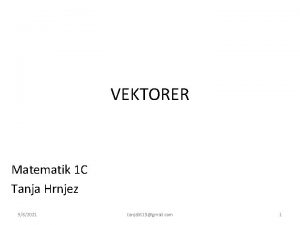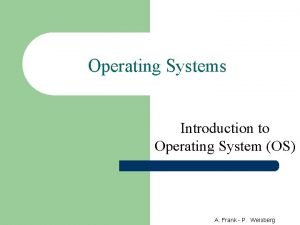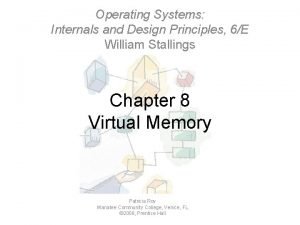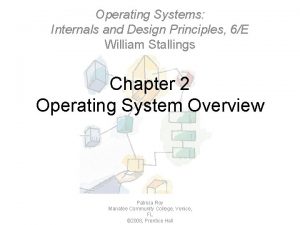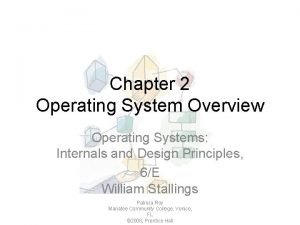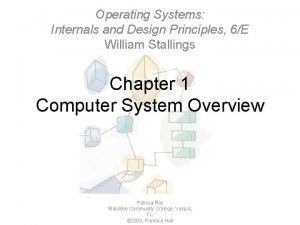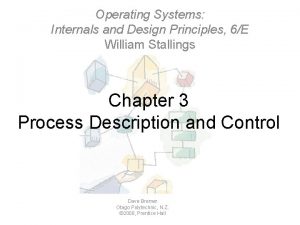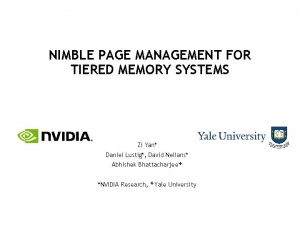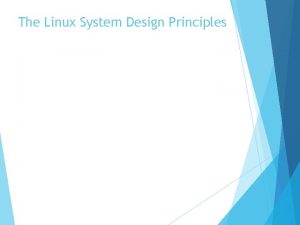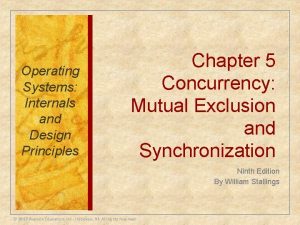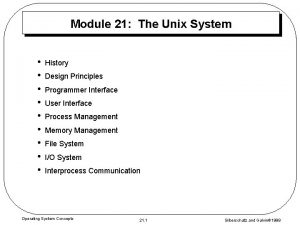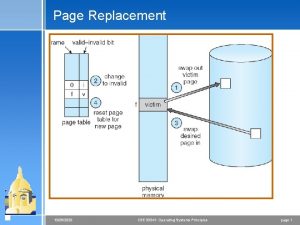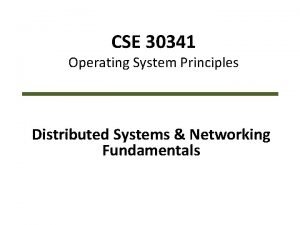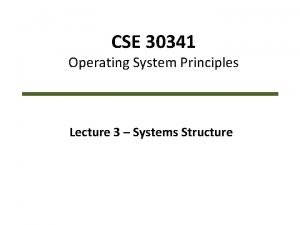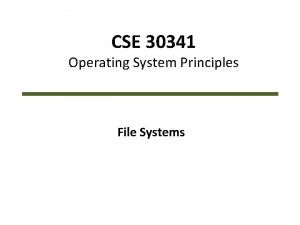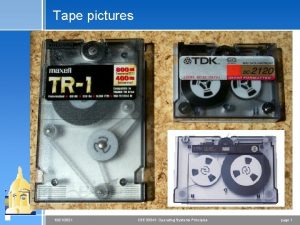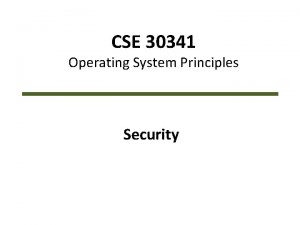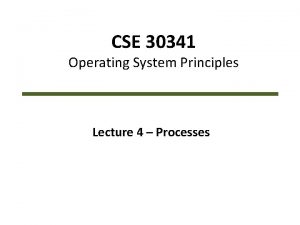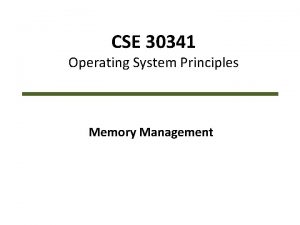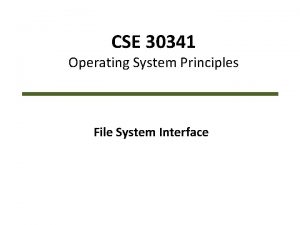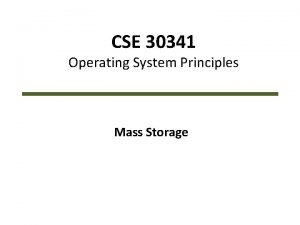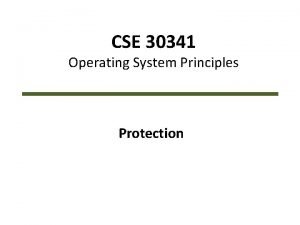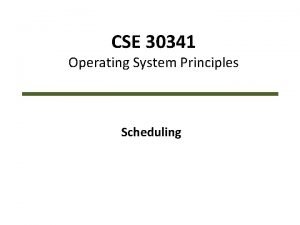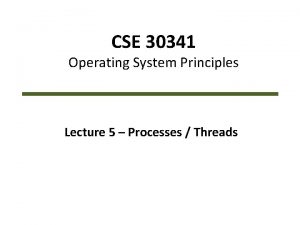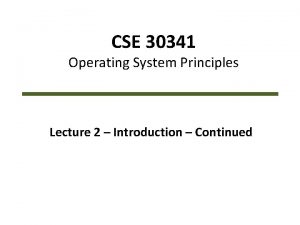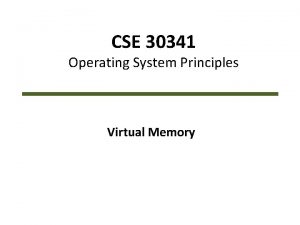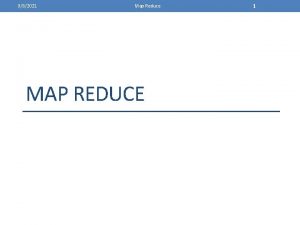982021 CSE 30341 Operating Systems Principles page 1




















- Slides: 20

9/8/2021 CSE 30341: Operating Systems Principles page 1

Locking protocol to enforce order 4 Shared: Transaction can read but not write 4 Exclusive: Transaction can read and write 4 Two phase protocol to ensure serializability: < Growing phase - transaction can obtain but not release locks < Shrinking phase - transaction can release lock but not acquire new ones < Ensures conflict serializability but is not free from deadlocks 9/8/2021 CSE 30341: Operating Systems Principles page 2

Timestamp-based Protocols 4 Timestamp transactions: Can be real wall clock time or logical clock 4 The timestamp determines the serializability order 4 For each data item (Q), associate two timestamps < W-timestamp denotes largest timestamp of any transaction that successfully executed write(Q). < R-timestamp for read(Q) 4 Suppose Ti issues read(Q): < If TS(Ti) < W-timestamp(Q), rollback Ti < If TS(Ti) >= W-timestamp(Q), execute Ti, R-timestamp = maximum (R-timestamp(Q) and TS(Ti))� 4 Similarly for Ti issuing write(Q): 9/8/2021 CSE 30341: Operating Systems Principles page 3

Summary 4 So far, we covered primitives for process synchronization 4 Next, we investigate deadlocks 9/8/2021 CSE 30341: Operating Systems Principles page 4

Chapter 7: Deadlocks 4 To develop a description of deadlocks, which prevent sets of concurrent processes from completing their tasks 4 To present a number of different methods for preventing or avoiding deadlocks in a computer system. 9/8/2021 CSE 30341: Operating Systems Principles page 5

The Deadlock Problem 4 A set of blocked processes each holding a resource and waiting to acquire a resource held by another process in the set. 4 Example < System has 2 tape drives. < P 1 and P 2 each hold one tape drive and each needs another one. 4 Example < semaphores A and B, initialized to 1 P 0 P 1 wait (A); wait (B); 9/8/2021 wait(B) wait(A) CSE 30341: Operating Systems Principles page 6

System Model 4 Resource types R 1, R 2, . . . , Rm CPU cycles, memory space, I/O devices 4 Each resource type Ri has Wi instances. 4 Each process utilizes a resource as follows: < request < use < release 9/8/2021 CSE 30341: Operating Systems Principles page 7

Deadlock Characterization Deadlock can arise if four conditions hold simultaneously. 4 Mutual exclusion: only one process at a time can use a resource. 4 Hold and wait: a process holding at least one resource is waiting to acquire additional resources held by other processes. 4 No preemption: a resource can be released only voluntarily by the process holding it, after that process has completed its task. 4 Circular wait: there exists a set {P 0, P 1, …, P 0} of waiting processes such that P 0 is waiting for a resource that is held by P 1, P 1 is waiting for a resource that is held by P 2, …, Pn– 1 is waiting for a resource that is held by Pn, and P 0 is waiting for a resource that is held by P 0. 9/8/2021 CSE 30341: Operating Systems Principles page 8

Resource-Allocation Graph A set of vertices V and a set of edges E. 4 V is partitioned into two types: < P = {P 1, P 2, …, Pn}, the set consisting of all the processes in the system. < R = {R 1, R 2, …, Rm}, the set consisting of all resource types in the system. 4 request edge – directed edge P 1 Rj 4 assignment edge – directed edge Rj Pi 9/8/2021 CSE 30341: Operating Systems Principles page 9

Example of a Resource Allocation Graph 9/8/2021 CSE 30341: Operating Systems Principles page 10

Resource Allocation Graph With A Deadlock 9/8/2021 CSE 30341: Operating Systems Principles page 11

Resource Allocation Graph With A Cycle But No Deadlock 9/8/2021 CSE 30341: Operating Systems Principles page 12

Basic Facts 4 If graph contains no cycles no deadlock. 4 If graph contains a cycle < if only one instance per resource type, then deadlock. < if several instances per resource type, possibility of deadlock. 9/8/2021 CSE 30341: Operating Systems Principles page 13

Methods for Handling Deadlocks 4 Ensure that the system will never enter a deadlock state. 4 Allow the system to enter a deadlock state and then recover. 4 Ignore the problem and pretend that deadlocks never occur in the system; used by most operating systems, including UNIX. 9/8/2021 CSE 30341: Operating Systems Principles page 14

Deadlock Prevention Restrain the ways request can be made. 4 Mutual Exclusion – not required for sharable resources; must hold for nonsharable resources. 4 Hold and Wait – must guarantee that whenever a process requests a resource, it does not hold any other resources. < Require process to request and be allocated all its resources before it begins execution, or allow process to request resources only when the process has none. < Low resource utilization; starvation possible. 9/8/2021 CSE 30341: Operating Systems Principles page 15

Deadlock Prevention (Cont. ) 4 No Preemption – < If a process that is holding some resources requests another resource that cannot be immediately allocated to it, then all resources currently being held are released < Preempted resources are added to the list of resources for which the process is waiting < Process will be restarted only when it can regain its old resources, as well as the new ones that it is requesting 4 Circular Wait – impose a total ordering of all resource types, and require that each process requests resources in an increasing order of enumeration 9/8/2021 CSE 30341: Operating Systems Principles page 16

Deadlock Avoidance Requires that the system has some additional a priori information available. 4 Simplest and most useful model requires that each process declare the maximum number of resources of each type that it may need 4 The deadlock-avoidance algorithm dynamically examines the resource-allocation state to ensure that there can never be a circular-wait condition 4 Resource-allocation state is defined by the number of available and allocated resources, and the maximum demands of the processes 9/8/2021 CSE 30341: Operating Systems Principles page 17

Safe State 4 When a process requests an available resource, system must decide if immediate allocation leaves the system in a safe state 4 System is in safe state if there exists a safe sequence of all processes 4 Sequence <P 1, P 2, …, Pn> is safe if for each Pi, the resources that Pi can still request can be satisfied by currently available resources + resources held by all the Pj, with j<I < If Pi resource needs are not immediately available, then Pi can wait until all Pj have finished < When Pj is finished, Pi can obtain needed resources, execute, return allocated resources, and terminate < When Pi terminates, Pi+1 can obtain its needed resources, and so on 9/8/2021 CSE 30341: Operating Systems Principles page 18

Basic Facts 4 If a system is in safe state no deadlocks 4 If a system is in unsafe state possibility of deadlock 4 Avoidance ensure that a system will never enter an unsafe state 9/8/2021 CSE 30341: Operating Systems Principles page 19

Safe, Unsafe , Deadlock State 9/8/2021 CSE 30341: Operating Systems Principles page 20
 982021
982021 Operating system internals and design principles
Operating system internals and design principles Slidetodoc.com
Slidetodoc.com Operating systems: internals and design principles
Operating systems: internals and design principles Operating systems: internals and design principles
Operating systems: internals and design principles Operating systems: internals and design principles
Operating systems: internals and design principles Operating systems internals and design principles
Operating systems internals and design principles Operating systems internals and design principles
Operating systems internals and design principles Principles of complex systems for systems engineering
Principles of complex systems for systems engineering Apa cover page format
Apa cover page format Cse 340 principles of programming languages
Cse 340 principles of programming languages Cse 340 principles of programming languages
Cse 340 principles of programming languages Principles of page layout
Principles of page layout Tiered memory
Tiered memory Design principles of linux operating system
Design principles of linux operating system Operating system internals and design principles
Operating system internals and design principles Unix design principles
Unix design principles Operating system definition
Operating system definition Evolution of operating systems
Evolution of operating systems Components of operating systems
Components of operating systems Operating system definition
Operating system definition
